So I will immediately bother you with a question, and those who are on screen can raise the arm. And those who are not on video, just put me in the chat if you agree. So how many of you would like to be listened to each and every time you speak to someone, just raise your arms or put me into the chair?
And how many, if you prepare, usually pretty carefully for a presentation that is important for you, you do that. So that is all fine. That is the normal thing that we do. And I welcome you to communicate with Impact. My name is Ulrike and in the next roughly 40 minutes you will learn about five concrete techniques or areas where you can apply something differently right away so that you will be listened to and that your communication becomes more impactful. So first of all, I would like to thank you for being around from the bottom of my heart because it’s really hard today to get people on screen because people are really tired of going to zoom meetings. And so it’s my pleasure to have you here and to have this discussion today because I will make it a little bit of a discussion and an open one, but somehow interactive.
Do you mind if I add just a few words about myself? Is that okay? So what has been said before is absolutely right. That’s exactly the thing. I believe that women just need to be much more empowerment from the inside out. Many women tend to learn a lot more skills. They try to have more qualifications, go back to university to add a second MBA and all of these things. Whereas most of the time it’s just about how you promote yourself, how you communicate about yourself and with others. That would make a real difference. And that’s my passion. So I’m helping female leaders in the corporate world and also entrepreneurs to be bold, to be daring, to shine bright, and with a special focus on leading with authenticity and thus resulting from it. Charisma. Charisma is a very nice peace of mind, which I love to develop with people and is coming obviously from the inside. So another question again, let’s go into the topic now, the topic. What do you think is the main ingredient of impactful communication? If you had to just put one into the chat, what is, in your opinion, the main ingredient of impactful communication. You might say? If I knew I wouldn’t be here.
Yeah. That’s good, that’s good technique. Storytelling and answer to why and all of that, most of it, apart from the authenticity is content focused. What I will bring up today is rather something that is coming more from the inside than from what you share in terms of words on the outside. And you will see that all five tips have nothing to do with messages. And that is what makes it different from any approach that we usually have and that I had in 20 years of corporate communications. It’s all about shaping the message and did not always lended, I can tell you. So the main ingredient in my opinion of communication is something, something else. Even good communication is never just one way. Communication is always a dialogue. And in this dialogue piece, what you are getting back. So what you’re receiving is much more important than what you’re sending out.
And the biggest mistake that most people make is that they focus on what they are sending out and not so much on it at all on what they’re getting back. And this is why they do not create a connection with the audience. Even if the audience is just one person and this is why the message isn’t landing and people forget them or just do not buy into their ideas. So that brings me directly to the first of the five tips. And the first one is connect before you start presenting whatever you want to present before you send out your message. Do you remember how I started like three minutes ago I think, or four minutes ago? The first thing that I did, I was asking two questions, even three actually with the question that was if I’m asking too many questions. And then I was speaking about what is in it for you, these 40 minutes, then I was thanking you for being here and only then, so after three different other elements, I was introducing myself and I only did it after asking you if I have the permission to do so.
Whereas when you usually go into presentations of any kind, the first thing that people do is they say their name, they say what this is about, and then they start just with delivering and I saw the other way around, make it important, make the other party important. People are not interested in you, you are not interested in me as a person, you are interested in what I have to share because you want to apply this in your life. So you’re basically interested in getting something out here from you. For you, this is why you’re here. And coming from this perspective is totally different than coming from the I deliver a message perspective. So that’s a first important shift. Connect first, put the audience in the forefront, take this time. If you have a longer time, a full day event for example, you can take much more time in the beginning. So it’s really about them before it’s about you and the topic itself or as such. Another way of connecting these days is because it has become very rare and I hope to be able to do this a bit much more in the next month. It is really when you have the pleasure, the luxury to be in a room with people.
That’s the obvious thing of eye contact. And using that time for it, using the body language as well and having the courage to support this or stand this odd moment when you might be there and stand in front of a group and look on the left and look on the right and look into the middle and look all other people in the eyes and it takes 10 seconds or 15. And this seems to you to, for you to be an hour or more . But it gives people really this feeling, wow, she can stand that. And on the other side, I’m really curious now what she will be saying. So you get attention. That’s a little trick, which you might have heard already. But the first thing is really about connect first, not speak first, explain first, connect first, then explain not this the usual way around.
And that will make a difference when you go into presentations. So that’s number one. Number two is a very obvious one, but I know from all my customers that is maybe obvious, but that’s not implemented and that most people don’t apply it and that is listening. So no surprise I guess. Listening is obviously a very, very important part of communication when I have people where I do trainings that are not about communication, but when the topic still comes up because it always somehow comes up, I always say, if there’s just one thing that you change in the way you communicate, change your way of listening. And you will see that a lot of different things will happen because there’s a lot of consequences to good listening and a lot of consequences also to mediocre or bad listening. So again, a question for you. How many of you consider yourself being a really, really good listener?
Yeah. Well, whoa. Most of us know that it’s not really the best. We are not the best at listening. Actually, it’s one of these things that it could improve. How many of you, and I’m sure that the answers obviously all of you, because we all do that. When you’re listening to someone that you, your thoughts are going to something else. Even when you’re listening to me now, you might think of, oh, I haven’t done, I don’t have done the shopping, which I want you to do for this evening. What will I cook later, for example? Or do we go out tomorrow and the friends that are coming on Saturday have I prepared everything? You know, these kinds of thoughts which have nothing to do with what you are supposed to listen to. We have that every time. And the important thing is that we help ourselves to be more attentive when we really need to be.
So when you are in front of a customer, obviously it’s an important situation or in front of a potential investor, whatever for you is an important stakeholder, then really train yourself to listen to this person at a hundred percent. And a good trick to do that is that you give yourself the objective to paraphrase what you have heard because that forces you to listen. Paraphrasing is obviously a technique that I guess that every one of you has already heard of, but paraphrasing can go one step further. Well, the usual paraphrasing is you have a person saying something two or three sentences in a row or even more, and you then say, what I hear from you is, and then you repeat what you have heard in your own words. This is the advantage that most of the time actually the person will correct you a little bit because you will repeat something with your own lens.
And that is not exactly what the person was meaning to say. And this is where you avoid a first misunderstanding. This helps you in turn to get very useful information about what this person actually really wants, especially if it’s a client. It’s very useful to do that. And I always give a tip that is much more, much deeper and creates a much stronger connection. So that’s obviously something which you can’t do in front of a thousand people crowd, but you can do that in one, one-on-ones or in little groups when one is speaking that you paraphrase it this way when somebody’s sharing something and you can feel that there’s a specific emotion behind that. Maybe that’s frustration or maybe impatience or anger or maybe also joy or happiness or something that you bring this into your paraphrasing. For example, you have a person who is saying to you, oh, this project went really well at the start, but then we had quite some problems and at the end I wasn’t really happy with how we finished that, but it doesn’t matter, it was still okay.
And now we move on to something else. You could paraphrase this by saying, what I hear from you is that you are frustrated about how this project in the end went and that you would like have to like to see it in a different way. So you are adding an interpretation by saying, what I hear from you is that you are frustrated because she hasn’t said that, but you felt it somehow. This gives the other person the feeling is more than a feeling because you actually try to understand truly where she is right now, is she feeling frustrated, joyful? And if somebody imagined the other way around, somebody says that to you would feel like, wow, I was really listened to. She kind of tries to really understand what I’m up to and what is what, what my pain points are, for example, to try to bring this emotional level in, even if it’s not a hundred percent accurate.
Because again, the person, if it’s not accurate, will say, then no, actually I’m not really frustrated. That’s not exactly it. I was rather disappointed. That’s maybe, you know, it’s a little bit different. And by this you get this useful information, valuable information about what the other person is, is feeling, doing what they potentially want, where you could potentially step in and help. And it forces you to listen. The other thing that I, that is a good trick when you really want to listen, listen for understanding. Do not listen for replying. How often when you listen, you are already searching for the answer that you’ll give or the question that you will ask while the person is speaking because you want to be quick, you don’t want to be a performer directly come up with something. As soon as you do that, obviously, you will not listen anymore.
You will miss this bit. Whatever she said in that moment, you will not see it, you will not hear it and you are already somewhere else. And often this is even seen in the body language that the person just disconnected. And this is irritating for the other person because they realize that as well. So just really listen to understand, not to buy in or to appreciate what is said. It’s not the same thing. Just understand what she or he is saying and do not try to shape or reply, shape a question, forget about this because if you truly try to understand a remark, a question or something will come very easily afterwards directly because you will understand that. And that is a different way of listening. It’s a different depth. It takes more time. So if you have, I don’t know, a one-on-one meeting with someone, for example, and you want to hold this meeting the dialogue in a way that you really want to paraphrase quite often, then add on 50% more time because you will need that.
But it’s worth doing that you will create a different connection. And it comes back to point number one, the connection piece is happening when you really, really, seriously improve your listening skills and put that on top of the list. And we have a nice comment from Val also here in the, in the chat, which you can see that a lot of misunderstanding on people appear from not listening. That’s exactly it, exactly. We think we understood, we make up our own story somehow and bring that in. Whereas Isn’t, it’s not at all what a person is saying and there’s so much misunderstanding out there. It’s really crazy. And in companies you can see that very, very much and there are millions lost just because of these misunderstandings. It’s not huge misunderstanding, it’s just not exactly the same thing. And then we don’t do things like we are supposed to do and we are surprised why people are not doing what we told them to do.
We thought we were crystal clear. So listening, the third one is about having the right intent. And the right intent is about creating a win-win situation. Again, nothing new. Win-win, no, everybody knows, everybody knows win-wins are good. Everybody knows that it’s, we have to create win-wins, but are we doing it? I mean seriously are we doing it? When you’re going into a presentation and you think about how do I present my project? You want to be seen as someone competent, professional. You want that people buy into your idea for example. Then obviously you come in with the idea that you want to shine, it’s logical, but as soon as you think very much about how you want to shine and shape your message and do all of that, you do not really think that much about the win for the other person.
Well you think maybe the win is because my product is great for them, but you don’t really think of them. It’s for you a given. Whereas it’s not really a given. It is only then present also and, and yeah, tangible for the other person if you really bring it up right, right up front. If you seriously think about when you have an important discussion with someone or presentation in front of a group, what exactly is the win for them? What will they take away? What is this win? And then it’s important that you pronounce it in the beginning before you even start introducing yourself, before you even start, you know, going into the topic as such, start to say or speak about the win for the other person because that’s what they want to hear. And it’s important that you don’t forget your own win.
I know women who then do lose win instead of a win lose because they just give all away and nothing, nothing from themselves anymore. So having a balance here but coming in with this, this win-win, attend and intent. So the intent again is something important. It’s about the outcome, but it’s not exactly the same thing. You think about an outcome, you want a contract signed or something that is something, but what is the win for the other party? And this is what you need to bring up. Not that you want a contract signed, for example, when you start your speech. Is that clear so far?
Okay. So the first three, let me just recap that because we then go to the other two, which for me are the real interesting ones. So the first three are about connect first, listen, having the right intent and all three have in common that they focus on the audience, they focus on the other part. They do not focus on you at all. Now to be able to focus on the other side and not on you, not really on your message, on your project, on how you’re standing there and on all of that is only possible if you are so solid in your own foundation that you are able to deliver this to others very generously because you feel free from this need of being perfect. For example, how many of you would say that you have the tendency to be a perfectionist and can raise your arms or put it into the chat?
You’re not lucky, you, lucky you, I’m a bloody perfectionist, not cool. I always say you when you’re a perfectionist, you are as you can, you can do as many per much personal development as you want. You will stay a perfectionist. It’s like being an alcoholic, but you can manage it. You can learn to, to get it down, to manage it. This pressure. There is a nice sentence that I’ve read and I have unfortunately written down where I read it, but it was exactly what’s going on out there. It says that, um, the world is demanding perfectionism, yet it craves authenticity. And that is very true. I mean we see it all over the place. Everything seems to be perfect and the importance of social media makes a big contribution to that. Especially if you look at Instagram accounts where so many things are retouched as well, that people start thinking that they really look like this and they hate their true face.
I mean it’s really quite dramatic what goes on in certain areas in this sense, but we have this feeling everything needs to be perfect. And if we are doing that well then we pay it with our authenticity because authentic people don’t think that they are perfect. Let’s say others see them like that because they love it. And authentic people are pretty rare and authenticity needs for most quite a lot of courage because it needs to let needs that we let go control versus, being perfect, you kind of control the whole thing. And potentially also showing some vulnerabilities if you really want to be authentic and this makes a speech or a presentation very different, for example. So how many of you think that my presentation here is perfect ? I don’t think so. You know, I don’t think so, and I didn’t work it out to be perfect because that’s not my point.
I mean, if I would have to do a Ted talk, I think that’s probably the only occasion where I would probably really again, work towards something really wordsmith and really, really planned out. But usually what I do these days, I just speak about the topic very freely and it’s never perfect. And afterwards I realize, oh, if I speak too fast again, spoken too fast, or it was, you know, I missed that point. Ah, I should have talked about that one or something like that. But that’s how it is. And I think we need to have the courage to just be more authentic, more ourselves. Because what is happening when you are trying to be perfect? Where is your focus on yourself? That’s the whole point. When we spoke about the first three things, it was all about outward looking into the audience, getting feedback from them, and being receptive to this feedback.
When you try to be perfect, you will be thinking, oh, what’s my next sentence? What’s the next slide that I’m showing? What did I want to say about this? Oh my God, I hope they don’t ask a question now. And am I standing right? Oh no, I have to turn myself a little bit more like that, right? And I have to use my arms more. Ah, that’s what I wanted to do. You see that the storm of thoughts that goes on in your head at this moment, it’s absolutely crazy. And to listen to this storm of thoughts, why you are speaking, it’s all happening at the same time, means that you are just focusing on yourself, you’re shutting down and people feel that there’s no energy going out from you anymore because you’re so much thinking about your talk, maybe about the slides that you have there.
If you’re just staring at your computer and at some words you know what you have to read out or something like that because you want to get it right, that you cannot send out any energy anymore and you cannot be attentive to listen to any kind of nonverbal cues that you get back from the audience. You know, to at least feel your bigger group of people. They won’t speak up, but they will have a certain body language. And it’s important that you really look into this, that you give yourself the possibility even if you’re not saying something for a few seconds and there’s just silence because you think and you look and you think, Hmm, what did I say next? And you just do it and there’s a little break and it’s maybe not perfect. And people today appreciate this quite a lot because it’s not seen very often.
So it again can become even a bit of a us p if you are courageous enough to just be that and be this very authentic person to create this connection, which creates a different kind of credibility cuz it’s very strongly linked. And I guess as entrepreneurs, at least I live this like this myself, the credibility piece is very important and not so easy to gain when you have customers or clients who have never seen you or potential partners or wherever. And you have two types of credibility. You have the type of the objective and the subjective credibility. And most people work a lot on the objective credibility. You know, what are my competencies? What’s my background? What’s my experience? What are customers saying about me? Or whatever. It’s all objective credibility and you come with kind of some, some kind of facts actually around that.
And that’s relatively easy to pull together because it’s facts. You can even put it on a slide if you want to, which gives its famous security of the slide but it doesn’t convince your customer really, not really because it’s not touching anyone emotionally, these kinds of objective credibility points. But if you are able to create a subjective credibility just by your personality, by the way you speak to them, by the fact that you give them the space because you do not need to take that space to shine and to be the person that you want them to see in you, then you have a completely different standing because you can just come in with a totally different attitude, much more relaxed about yourself because you do not put this pressure on you as well, that everything needs to be perfect. You know, it can just a bit of flexibility and obviously this needs, it needs in many, many situations more present, more preparation than just coming in with a perfectly worked out presentation.
But it gives you flexibility. And I like to do that very much. I rather go in today where I say, okay, these are the key messages I want to deliver. That’s clear. There must be something which I absolutely want to bring over. But if I see that there can be more interactivity, then I know that there will be a few exercises which just can quickly bring up one minute pieces or longer ones depending on the time you have. And I can also skip them. If we don’t have that time or the other way around, I can bring in a bit more facts because as I see that the audience is very fact oriented because they react to that. You see that numbers for example, help them to buy into what you’re saying, well prepare, but more. But if you have an audience who’s quickly bored with that, it doesn’t help if you insist on your numbers, just give it, give it up and move to the next topic.
So work something out that stays very flexible and gives you the possibility to just be yourself and be spontaneous. And this is very impressive for most people because they only know the version. Everything is delivered like planned and then they say yes or no , and that’s it. So that’s a little bit of a very different thinking about authenticity, just looking at the watch. I have a bit more time because the last point is also important and it is the partner of it in a certain way. It is about finding out what you think about yourself. There was a question also, how do you practice this? So yes, that is a very good question and it brings me to point number four. I recently, you know, maybe I have a podcast called Empowering Female Leaders. And there will be cool, really, really cool talks in the next few months.
You can find it on any podcast platform with really interesting ladies, which I interviewed over the past two weeks. One I did for another podcast actually, and I will bring it up again, was a lady who wrote a book about befriending your inner inner narrators. So this is my fifth point, getting aware, getting a true awareness of your inner voices, not of all of them, no way, because there are too many , overwhelming number of shout outs that you get in your head every day, but of the ones that are important for you in crucial situations. And if you have five minutes more, we can even do a little exercise around that. Just let me speak about this in a narrative. What I mean by that, we all have our own chat box in our head. Voices that are speaking to us, our voice actually, they’re speaking to us all the time.
You know, like you forget your keys at home. You tell yourself off you weren’t sending this email, say, oh, again, I’m always forgetting these things. I’m so stupid why I’m doing this. These kind of thoughts. We have a lot of thoughts like this. When we get into a situation, for example where you have prepared your presentation, I call it a presentation that is fine for you. Is there something compelling for you? Let’s call it a presentation, can be towards any kind of stakeholder you have. You prepare your presentation in terms of content, obviously yes, you are clear about what you want to say, you prepare the outcome that you want to have and all of that. You might prepare the points that I’ve set before on connecting, listening, having the right intent, making the authenticity piece. You try to be yourself and everything and you maybe visualize the situation before to prepare yourself mentally for that good technique by the way.
And then you start and you get in even with a really good mindset, you know, put yourself in very courageous shoes and you feel well about yourself. And then you go into the situation and as it’s a situation that you have already seen and where you have already maybe failed, at least failed in your eyes, the voices come up saying like, it will not work out again. And you will always do the same mistakes. And what if you stumble over yours in that one and you shouldn’t forget this one. And now not do just speak to this, you have tons of thoughts and they come at the speed. You can’t even, I can’t, speak fast, but I can’t speak that fast. It’s like ba bum, bum bombarding you in the very second before you speak up. And what does this do to you?
You have to fight against them because you still try to keep up your energy. The nice energy that you had just 30 seconds ago. And it’s just like, ah, and it feels so how to say, you know, like you, you have to put a rock in front of you. It’s really, really, really hard to do that. And we will now can do a little exercise where we look into what kind of thoughts you have in these kind of situations that helps you to understand them. And I will tell you after the exercise how you can deal with them in the future, not only in the situation but already before. So if you are happy to do a little exercise, I would propose you now to bit calm down. Well, I have to come down with my energy as well to really calm down a little bit.
And I will ask you to close your eyes. It’ll take maybe two minutes, but before you close your eyes, you can close them right now if you want. But before you close your eyes, think about a concrete situation. It can be one of the past, can be one of the future, one of these typical ones where you know that there’s always something coming in your way and you’re not speaking or communicating like you would love to do it. They would’ve loved to do it. You, you were just again, afterwards saying to yourself, ah, it was again, not really like I wanted it to be. This kind of situation or maybe an upcoming situation. Maybe you’ll have an important meeting tomorrow or next week and you’re nervous about this one. That’s a good one to take as well. And to imagine how this will be a concrete one in the future is interesting. So if you have one, are you ready for your situation? Just raise your arm or give me a sign in any, any other shape and form. I guess the others have a situation too. Okay? So now please close your eyes.
You close your eyes and you imagine exactly that situation. Let it appear in front of your inner eye like a movie in color, and make sure that you watch the situation out of your own eyes. So if you are out of your body slipping into your body and watch the situation out of your own eyes, what are you hearing? What is it that you will present or speak about? And what are you feeling right now? And now you know that you will have to start to speak in a few seconds and you’re just preparing yourself mentally for it. What comes to your mind right now? What are these thoughts? What are they telling you? And if you have these thoughts, you can, those who I can see, maybe raise your arms if you have two, three sentences that you can hear. Have to find some of them. So I hope that the others had the chance to do that too. It’s a very short exercise, I cannot go into a full, full kind of meditation. But the thoughts that you hear there, a question for you. Are they thoughts which you are hearing from yourself? Is it your voice or who is saying that to you? Who has said that to you? Was it your mother, your father, maybe your teacher, friends when you are young. What brought these thoughts up?
The thoughts that we have about ourselves that are coming up than these mostly limiting thoughts that we have about ourselves. They have been fed into us our whole life very early on mostly. So when we come to life as a baby, we don’t have these kind of thoughts. Not only because we cannot speak yet, but just we don’t have that. We are a clean canvas, everything’s wonderful, and then boom, boom, boom. A lot of thoughts are filled into our brain. And the thoughts that we have today, we think it’s a reality, but it’s not. It’s just what has been filled in your brain. And you can decide that I don’t want to have this in my brain. I want to have something else in my brain. Now I know that it’s very difficult to, you just, you cannot just throw them out and you know, I get others in easygoing.
So what you can do when you have any kind of limiting thoughts, and it’s always important to listen to yourself learning to just listen. What are you saying to yourself in crucial moments? Just start listening, you know, stop for, for a minute or 30 seconds and just listen to what is going on in your head if you have an awkward feeling in your belly. So I don’t feel well about myself. And if that happens in the middle of the day sometimes just think about what have I thought in the past 30 seconds. And then you will discover some things and you can even note them down to just uncover a bit the patterns that you have in terms of thoughts. And if you have a specific situation, now advance comes to communication. It’s very useful. You can do this exercise again with a bit more time.
Really listen to what is coming up. And if you take the time to emerge yourself, you know, really visualize the situation, emerge yourself into the emotion that you have. It can be the positive emotion, excitement that you go there that might switch then suddenly to anxiety when you have to start. And in between there are the thoughts. They make the switch from excitement towards anxiety. And these thoughts, if you know what they are saying, then they cannot hide anymore. As long as you don’t know what they are saying. They operate from the background and they influence your emotions and you can’t do anything about it when you know what they are saying. Then I always say to people, do not just replace them by positive thoughts. That is what you hear often in books about positive thinking, but that doesn’t work. It doesn’t work.
It’s too radical. The negative thoughts that you have, most of them accompany you already for your whole life, most of them, at least for your whole adult life. And so they’re so long with you. You can imagine these thoughts like people that are helping you through your whole life. They think that they’re helping you. Yeah, let’s see it like that.It’s a bit like a conglomerate of people which you have inside of you. They think they help you. So you cannot just say, go away now after 20, 30, 40 years, go away. I don’t need you anymore. It’s like a person who was there for you, for destinies and say, what? She’s joking, she needs me, she needs me. I’m protecting her. I am protecting her. She needs me. So that will not go away. But you just try to push them away. Like, no, I don’t think that, I think something else right now.
Then we will focus on these thoughts here more, give them even more power because they will really push, push, push to be around. It’s a, it’s another approach and it’s, it’s just slightly different when you hear a voice and really listen out for them. I do this every morning, for example, on things where I want to further develop my mindset and sit down and sometimes it’s just a five minute, I call it a meditation because for me that feels like that, but can call it somehow I just sit down, check my emotions, check if there’s a feeling of very, or a feeling of anxiety, of a feeling of these things with just don’t make you feel good. Maybe when you stand up in the morning or throughout the day. And I just try to acknowledge it’s there. Just look at it. Say, okay, you’re there.
I see you, I feel you, yes. And if it’s a thought just tell them something very simple. Tell them I hear you, thank you for sharing. But I decide now that I want to think something different. But thank you. And a thank you piece is very important because you don’t get this huge resistance from the thought. You know, it’s not, it’s not pushing like crazy to still be in your brain like, ah, I have to be there because you thank you for sharing. I decide not to do something else. Sometimes you have to do that two or three times in a row until you can feel that. Yeah. Okay. It’s letting me go a little bit. At least for the moment. And, tackle this one by one, take one where you feel, wow, this one really, feels very destructive to me.
When I hear me that saying to me, this is, this is really getting, pulling away all my energy. So start with the strong ones and it will take time and you need to work on that. But just look at them, acknowledge them, say, thank you for sharing. I now just focus on something else and you focus on something else and you just move on with what you’re focusing on. And you will see that over time they lose a bit of their energy and they can’t grab you like this anymore because you see them coming. That’s the first thing. And, you just let them go. That’s a very different approach from pushing them away. It’s the same with your anxiety or fears, for example. It’s the same situation. Fears are very strong. If you try to push them away, they come back like a boomerang after a while or immediately.
So it’s really about the small work for fears for example. But it’s a very simple technique which takes training time like a muscle. So your brain is like a muscle. You can train it, you can have different kinds of thoughts, you can learn to think differently. And after a while, this way of detecting them becomes pretty automatic. So I realized today, very quickly when something negative is coming into my mind, I see it. I cannot always prevent it, but it’s not taking over anymore or not for long. There must be a very, very strong emotional trigger with a very specific conflict for some with a person maybe, but most of the time it’s not happening anymore. But it took me time. So it’s not something that I did just in a session of one hour and that it was gone. So these are for me, the five things.
And in these inner voices, we women have some that are very strong and I see a lot in women. And this is a self-critical voice. Yeah, this voice that is pulling you down and saying, it’s not good enough. You will, you will again not not get it right. You know, this kind of thing, which is immediately criticizing you for something which you haven’t even done yet. it’s immediately saying you will not be good enough. And then the other one is a people pleaser voice. Many women have that we want to be liked, we want to please the people please. A voice again, is a voice that is preventing many women finally from being respected because they choose to be liked instead of being respected, they choose not to say no because they want to be liked and then they’re not respecting. There’s this kind of mechanism behind.
And then you have the ecocentric one, maybe you know that one. These songs are like, oh, this is always happening to me. This is always happening to me, always me. Why me? It’s not really, it’s not always you, you just make this up in a certain way by making it up. You put your lens on it and you have the feeling that’s your reality. And then you have the overthinker one. Now also relatively often have an in with women that we ruminate too much think five times before we decide. Pretty careful about that. Weigh the pros and cons forever and just don’t wanna take a decision. Maybe some of you have this kind of pattern. And then the other one, and that is a true break to any future development, is the recaller voice, which is the voice that is always coming back to what happened before.
So if you failed in a presentation before, it’ll always bring up that you failed in the past. So you fail in the future. So it’ll always say, when you haven’t made it right in the past, you will fail in the future. And this prevents you from succeeding directly. You give yourself no means to succeed because you just believe in the fact that you can’t do it. So that’s the recaller is pretty not a nice one at all. But maybe you have just covered some mechanisms that you have in yourself and that helps you to go back and to close this talk to the other ones that helps you to be more authentic. Because by this, you know what’s going on inside and you can just handle that. You are not the victim of these emotional switches between being excited about the target and suddenly you’re so anxious and you’re backing on like an old pattern where you thought I got rid of that.
But it’s here again. You know? So you are not the victim of yourself. You can become more authentic by that. And then you have this capacity to look more, to be outward looking, to not focus on yourself anymore because you are used to it. You get to know yourself and you can just listen, connect, and come in with this win-win attitude because you just really, really focus on the audience. And the only thing I haven’t talked about is the thing that everybody thinks is the most important thing about communication, and that is shaping your message. But I can tell you, nobody cares about your words when you’re not coming with the right energy because everybody listens to body language first, and then people only listen to your words. So thank you for listening.
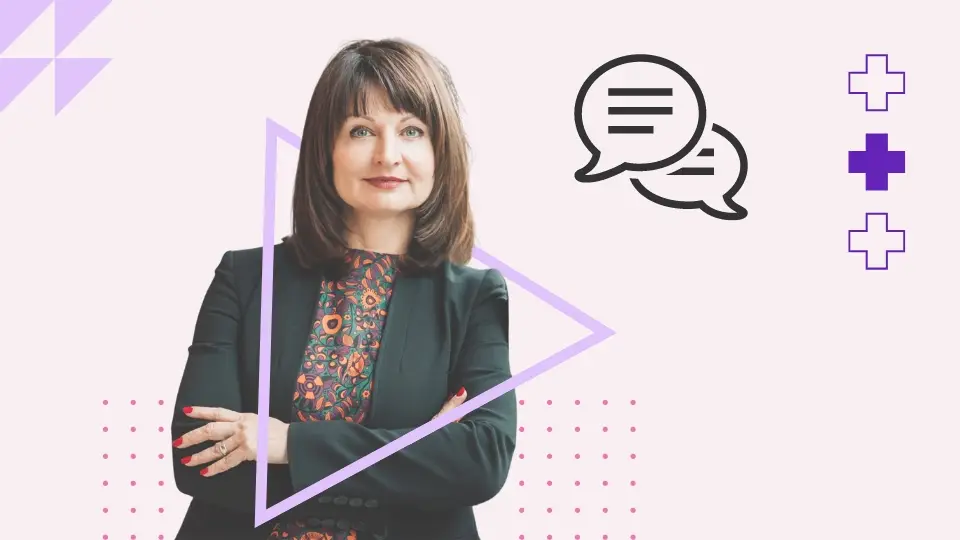
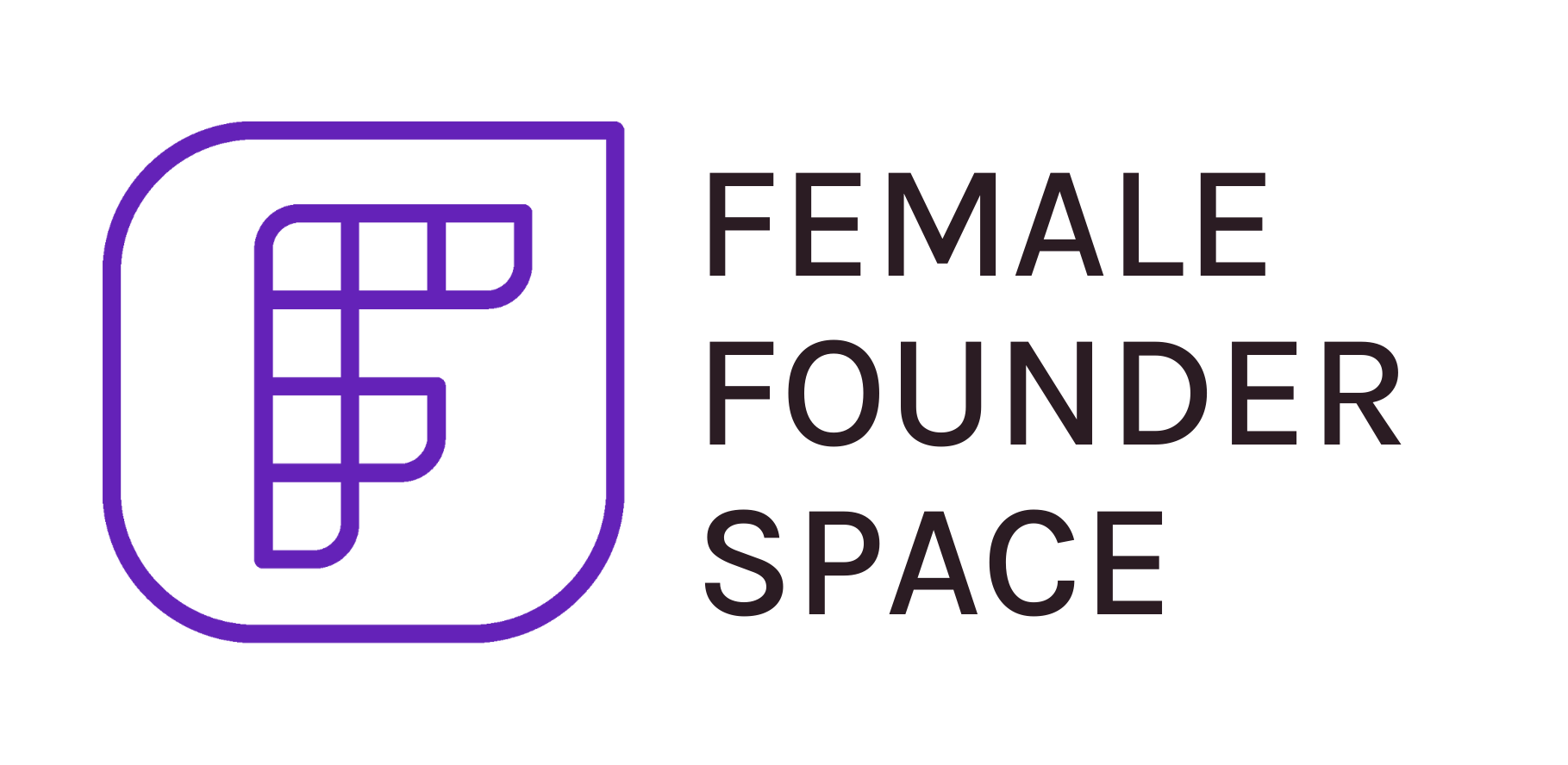

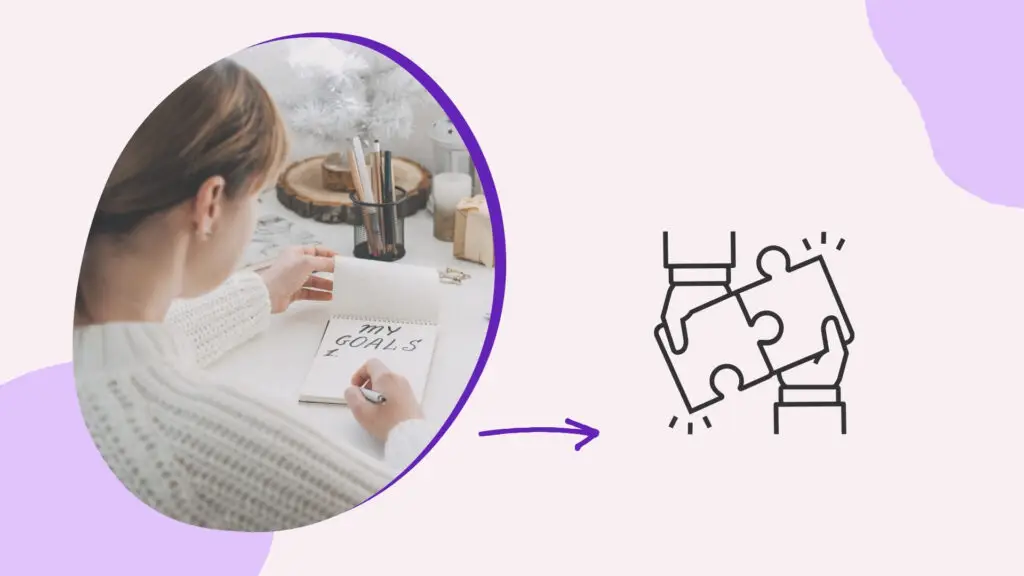

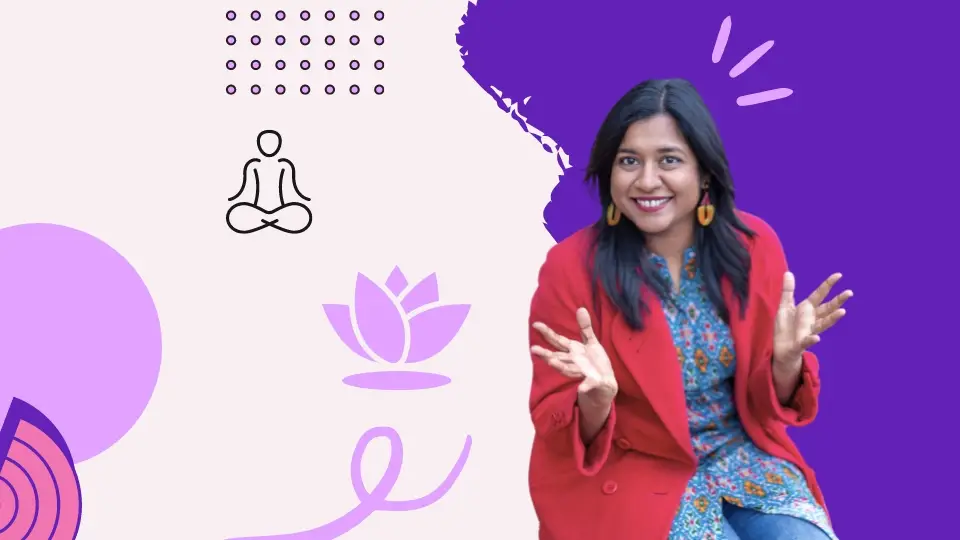
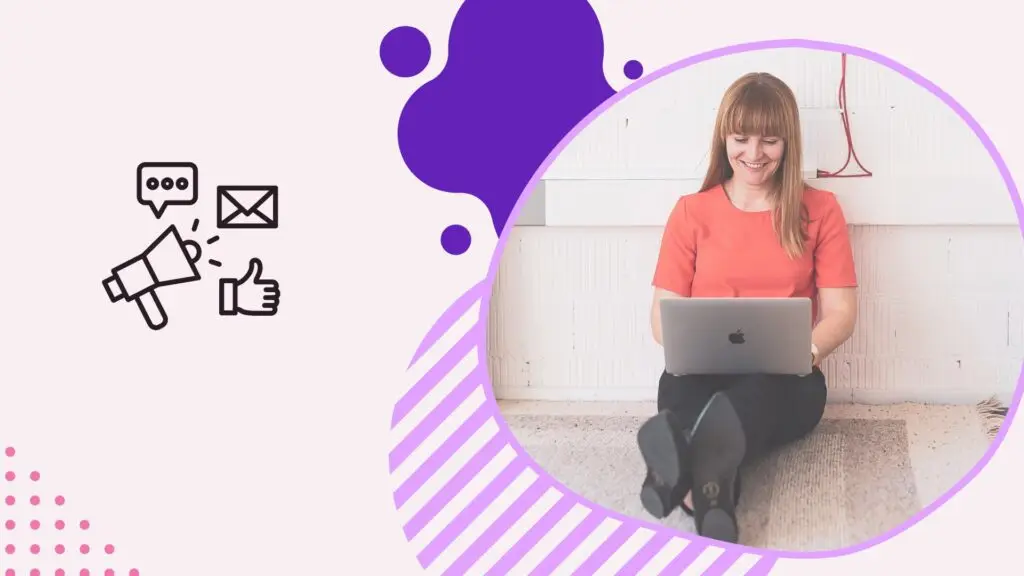

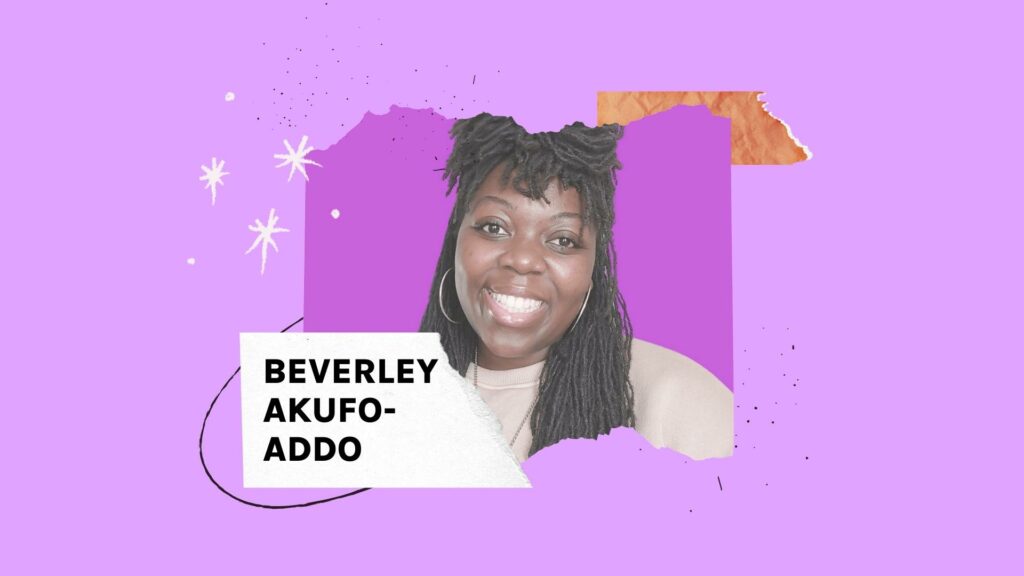
Responses